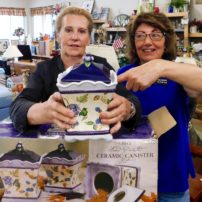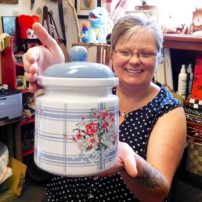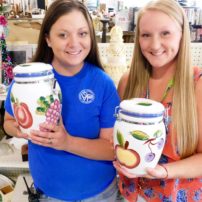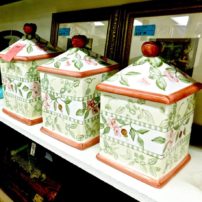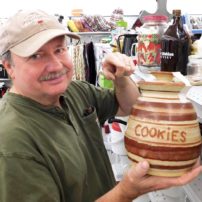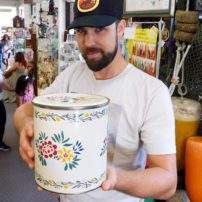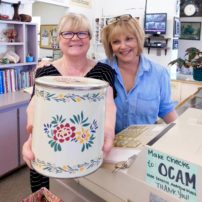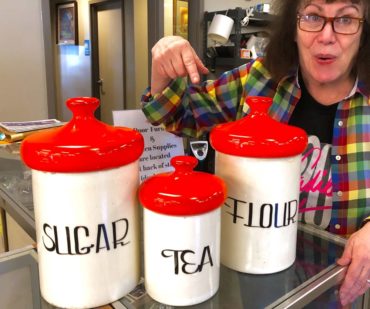 It might seem that the subject of kitchen canisters would be a piece of cake — big, cute containers everyone has. But like usual, the story became complicated as I was drawn into the world of complacency, as far as everyday kitchen items. Like the catch-all utensil drawer or the coffee maker used every day with little thought or appreciation as to its task.
It might seem that the subject of kitchen canisters would be a piece of cake — big, cute containers everyone has. But like usual, the story became complicated as I was drawn into the world of complacency, as far as everyday kitchen items. Like the catch-all utensil drawer or the coffee maker used every day with little thought or appreciation as to its task.
Sure, we think canisters are pretty, ho-hum things never the subject of conversation — until now. Surprisingly the “canister journey” would take an unusual turn.
While in a local store, a gal who knows that I’m into kitchen design and cookware said to me, “Canisters are trendy now.” Stopping in puzzlement, I replied, “They’ve never not been trendy.” We laughed. Then the second person that week said the same thing, and it was time to take a look at the subject of canisters.
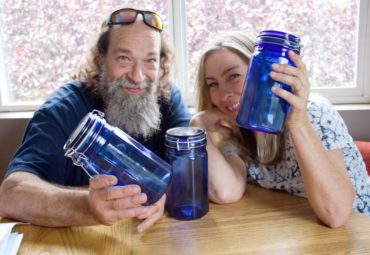 It’s a container for dry goods, from sugar to film to weaponry. The overlapping of definitions can be confusing — jars, carafes, jugs, tins, cans, bottles and so on. We think of a canister as a vessel that holds “dry” goods, whereas with a bottle or carafe, people think of “liquid.” Using or applying the word “kitchen” narrows our thinking to dry food in relationship to canisters.
It’s a container for dry goods, from sugar to film to weaponry. The overlapping of definitions can be confusing — jars, carafes, jugs, tins, cans, bottles and so on. We think of a canister as a vessel that holds “dry” goods, whereas with a bottle or carafe, people think of “liquid.” Using or applying the word “kitchen” narrows our thinking to dry food in relationship to canisters.
I began examining the new and old, visiting stores, going online and interviewing people. It was crazy how even strangers were cooperative when confronted with the topic. Imagine being in a Goodwill isle with tons of canisters and related vessels floor to ceiling, and you say to the guy looking at coffee pots, “Can I ask you about canisters and take your picture?”
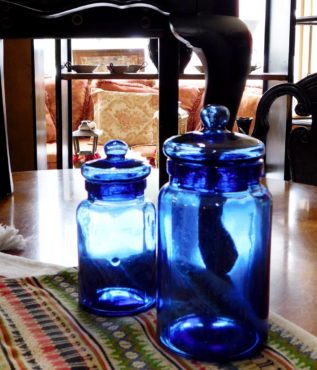 Amazingly, all joined in the fun, happy to hold and talk about the gems while I’m directing for the perfect pose. I also asked probably 50 folks if they had canisters in their kitchens and what was in those canisters. Nothing was out of the ordinary. “What a boring subject,” I began thinking to myself. All but a few had canister sets or cookie “jars” in their kitchens, and in those containers were virtually the same things — sugar, pasta, coffee etc.
Amazingly, all joined in the fun, happy to hold and talk about the gems while I’m directing for the perfect pose. I also asked probably 50 folks if they had canisters in their kitchens and what was in those canisters. Nothing was out of the ordinary. “What a boring subject,” I began thinking to myself. All but a few had canister sets or cookie “jars” in their kitchens, and in those containers were virtually the same things — sugar, pasta, coffee etc.
Looking at the old and new, I was surprised at the similarities. Identifying wording was seen more on older canister sets, and often those older sets included a breadbox, but as far as shape, size and material, the variety was endless, old or new.
Belfair’s thrift shop, Faith in Action, or now called The HUB, always seemed to have wonderful sets by the truckload.
“They sell as fast as they come in,” said Robin, who was working that day. She said folks like the midcentury, stainless steel and black.
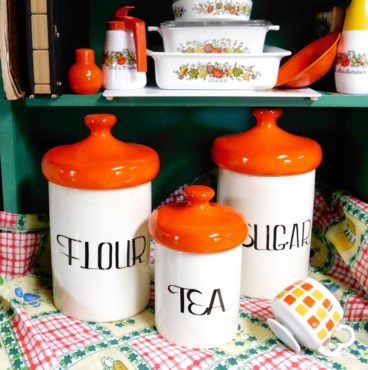 The canister project was fun, in that presenting the subject was unexpected. It gave folks pause for thought about an everyday kitchen item that is not earth-shaking, has no shortage, has similar contents, and comes with reasonable cost for both old and new.
The canister project was fun, in that presenting the subject was unexpected. It gave folks pause for thought about an everyday kitchen item that is not earth-shaking, has no shortage, has similar contents, and comes with reasonable cost for both old and new.
Here is where the “twist” came in. While I’m at my third St. Vincent de Paul’s visit, this one in Port Orchard, I began as usual, having fun with customers and workers. But now the conversation changed directions, as I asked two young gals what St. Vincent’s did for the community. Eyes widened and they shared so much, I could hardly keep up. Their enthusiasm was overwhelming.
Another stop was Joanne’s Antiques on Callow Avenue in Bremerton. In the past, I would stop there, for employees were usually aware of vintage trends. On this day, I was surprised that it was no longer in business there, and in its place was Abraham’s House, a nonprofit organization I was familiar with, but it had been a long time. Abraham’s House began its community-service project 20 years ago, and I remember helping at the time.
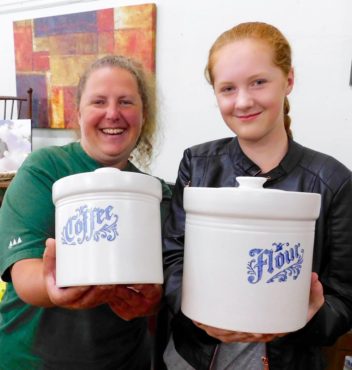 A friendly gal named Tina Munger greeted me at the thrift shop door. I told her that I was doing a canister study. At first, she seemed a bit mystified that someone would target a subject so much out of the norm. It took a minute, but soon it was like meeting a soul-sister. She said the same thing as others did, that canisters are readily donated and readily sold.
A friendly gal named Tina Munger greeted me at the thrift shop door. I told her that I was doing a canister study. At first, she seemed a bit mystified that someone would target a subject so much out of the norm. It took a minute, but soon it was like meeting a soul-sister. She said the same thing as others did, that canisters are readily donated and readily sold.
She showed me one canister set that was over a hundred years old, white with blue, Dutch-looking imagery. It was at this time that I realized I was getting caught up on cause rather than product.
This is where the twist came in. I, like most, get involved a little and donate, but as I directly inquired at these various nonprofit organizations, the reality of “getting things done” was humungous. Our community charitable thrift shops are quite amazing.
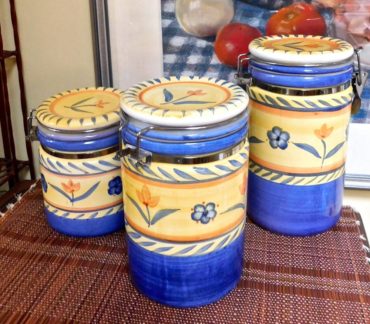 Abraham’s House’s operating costs are approximately 15 percent of monies raised from selling donated items. The rest of the proceeds are directed to mission causes. One program, every Saturday from 10:30 a.m. until 3 p.m., allows those in need to select merchandise free of charge.
Abraham’s House’s operating costs are approximately 15 percent of monies raised from selling donated items. The rest of the proceeds are directed to mission causes. One program, every Saturday from 10:30 a.m. until 3 p.m., allows those in need to select merchandise free of charge.
Abraham’s House also takes donated items to where they’re needed. It is important to note that family-owned Hill Moving donates time and trucks monthly to assist in transport. We have many businesses in our community that donate and help.
I regret not getting more info and detail as far as the dramatic and positive impact of these charitable thrift shops and the local businesses that help support them.
You know that stuff you have had packed away for so many, many years that maybe someday you’d need or the kids might want? Well, odds are the kids don’t want it, so just bite the bullet and donate locally.
And while you are out there “thrifting,” buy yourself another canister set.





